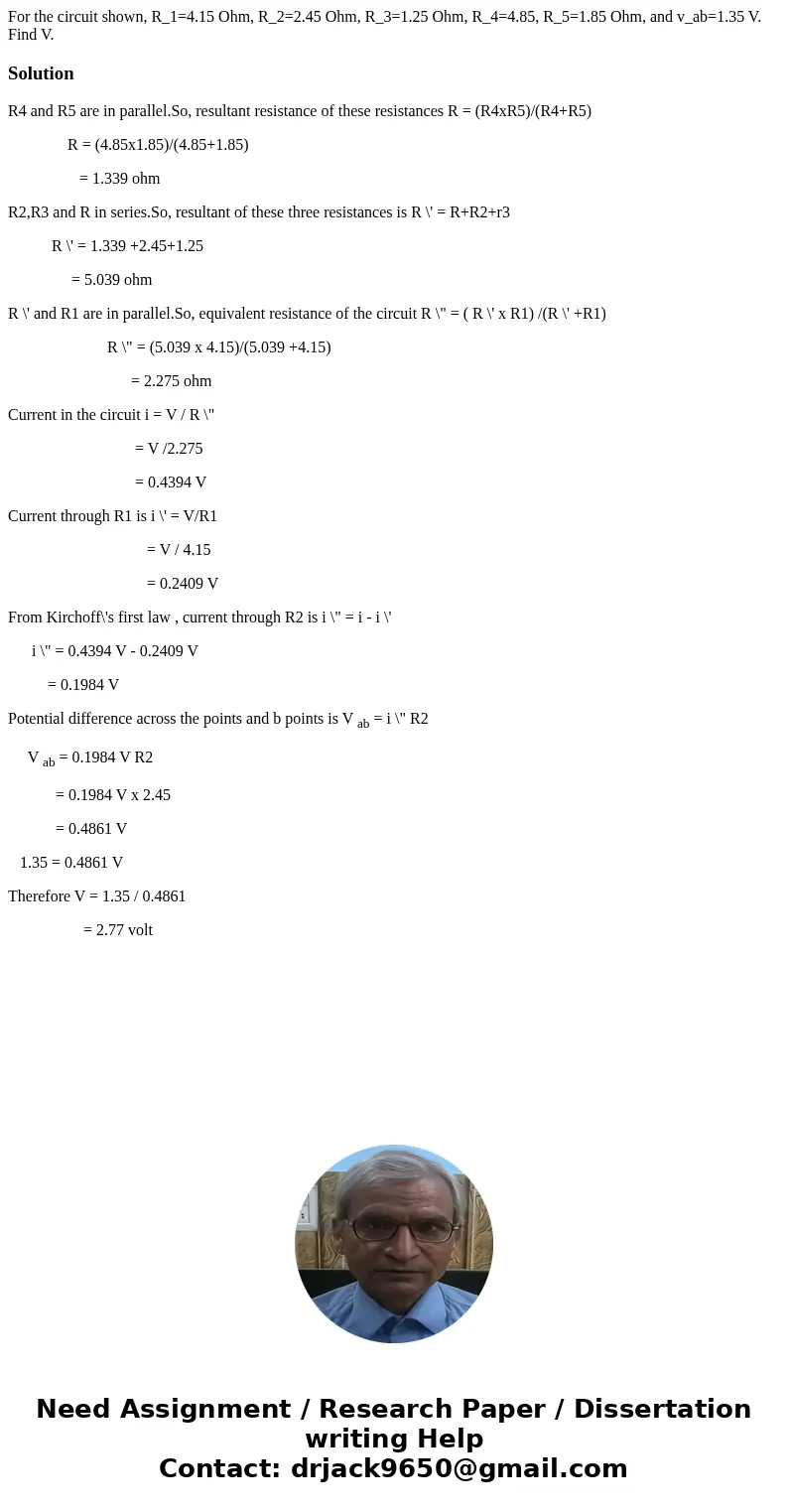For the circuit shown R1415 Ohm R2245 Ohm R3125 Ohm R4485 R5
Solution
R4 and R5 are in parallel.So, resultant resistance of these resistances R = (R4xR5)/(R4+R5)
R = (4.85x1.85)/(4.85+1.85)
= 1.339 ohm
R2,R3 and R in series.So, resultant of these three resistances is R \' = R+R2+r3
R \' = 1.339 +2.45+1.25
= 5.039 ohm
R \' and R1 are in parallel.So, equivalent resistance of the circuit R \" = ( R \' x R1) /(R \' +R1)
R \" = (5.039 x 4.15)/(5.039 +4.15)
= 2.275 ohm
Current in the circuit i = V / R \"
= V /2.275
= 0.4394 V
Current through R1 is i \' = V/R1
= V / 4.15
= 0.2409 V
From Kirchoff\'s first law , current through R2 is i \" = i - i \'
i \" = 0.4394 V - 0.2409 V
= 0.1984 V
Potential difference across the points and b points is V ab = i \" R2
V ab = 0.1984 V R2
= 0.1984 V x 2.45
= 0.4861 V
1.35 = 0.4861 V
Therefore V = 1.35 / 0.4861
= 2.77 volt

 Homework Sourse
Homework Sourse